Entering the Imperial Guard Scroll (入跸图卷)
A Ming Dynasty Masterpiece of Ceremonial Grandeur (Late 16th–Early 17th Century)
Overview
This monumental silk scroll (92.1 cm × 3,003.6 cm), part of the paired Departing and Returning Imperial Guard Scrolls (出警入跸图), depicts Emperor Wanli’s return via waterways after visiting the Ming imperial tombs. Created anonymously by Ming court painters and housed in Taipei’s National Palace Museum, it exemplifies Ming imperial propaganda through meticulous gongbi (工笔) brushwork, blending historical accuracy with symbolic pageantry.
Key Content & Symbolism
- Imperial Procession:
- Route: The scroll captures Emperor Wanli’s riverine journey from Tianshou Mountain (明十三陵) back to Beijing, passing landmarks like Gaoliang Bridge (高梁桥) and West Lake (西湖), as recorded in Wanli’s Daily Records (《万历起居注》).
- Seasonal Context: Peach blossoms and willow trees frame the scene, symbolizing spring renewal and aligning with Qingming tomb-sweeping rituals.
- Emperor’s Centrality:
- Iconography: Wanli, the sole frontal figure, sits regally on a dragon-prowed vessel. His enlarged face and golden robes emphasize divine mandate, while attendants and guards—depicted in profile—reflect strict Ming hierarchical codes.
- Historical Verification: Taiwan scholar Zhu Hong identified Wanli through cross-referencing the scroll’s depiction of Xizhimen Bridge (西直门桥) with Wanli’s Daily Records.
- Artistic Techniques:
- Brushwork: Mineral pigments (malachite green, cinnabar red) define ceremonial regalia, while “scattered perspective” guides viewers along the 30-meter narrative.
- Architectural Precision: Jiehua (界画) ruler techniques render pavilions and bridges, contrasting with fluid ink washes for water and clouds.
Cultural Context
- Terminology:
- Chujing (出警): “Departing the Guard”—the emperor’s land procession.
- Rubi (入跸): “Returning the Carriage”—his riverine return. Together, they symbolize imperial mobility and cosmic order.
- Southern Fragrance Hall (南薰殿):
- Originally stored in this Ming-Qing imperial archive, the scroll’s name derives from The Book of Rites: “The south wind’s warmth dispels sorrow.” The hall housed历代帝王像 (portraits of emperors), reinforcing the scroll’s role in legitimizing Wanli’s rule.
- Wanli’s Reign:
- Longest-ruling Ming emperor (48 years), Wanli’s early reign under reformist Zhang Juzheng saw prosperity, but his later neglect triggered dynastic decline. The scroll’s opulence mirrors his extravagance—12000 attendants documented in historical records, though only ~900 appear here.
Translation with Annotations
Original Chinese Text
此《入跸图》卷由明人绘。画卷描绘皇帝出京谒陵后,从水路坐船返回宫苑的皇帝。这件长度超过三十米的高头大卷,画了九百多名持各式仪仗的华丽护卫、随从。透过难以想像的盛大排场,展现回銮时无比的帝王气势。此卷为南薫殿旧藏,现藏于台北故宫博物院。
“跸” 的意思是帝王出行的车驾,“警跸” 的意思是清道,禁止路上行人,以利帝王车驾通行。出警入跸,意指皇帝出巡归来。“出警图” 与 “入跸图” 虽是各自分开的二幅长卷,但是所绘的却同是扫墓、巡视的过程,因而通常被合称为 “出警入跸图”。
画家将皇室谒陵的整个时空历程出发→抵达→返回,浓缩于二幅长卷之中。传统观赏 “出警图” 是由右往左;“入跸图” 则由左往右。“出警图” 绘皇帝骑马,由陆路出京,“入跸图” 画皇帝坐船,走水路还宫。这两幅图卷不但是台北故宫博物院所收藏手卷画作中最长的两幅,人物众多,场面宏伟,更是历代绘画作品中少见的超级巨作。
这二幅作品,均未署名作者姓名。但可以确定的是,得出动许多宫廷画师的合力创作,才能完成这二幅布局精彩生动的巨作。
台湾朱鸿教授认为经过仔细研究后提出《出警入跸图》上描绘的应该是明神宗万历皇帝朱翊钧。根据《万历起居注》记载,万历皇帝到西郊谒陵时乘马而去,坐船从水路而归,这正好与《出警入跸图》的描绘相符。《起居注》还记载万历皇帝归来时文武百官都在西直门桥欢迎皇帝而《出警入跸图》的结尾处所绘制的也是西直门桥。
English Translation with Cultural Notes
“Entering the Imperial Guard Scroll”
This scroll, paired with Departing the Imperial Guard Scroll, documents Emperor Wanli’s 16th-century return from ancestral rites:
- Structural Logic:
- Chujing (right-to-left viewing): Departs via land with cavalry.
- Rubi (left-to-right viewing): Returns via water, emphasizing Ming naval prowess.
- Narrative Details:
- Gaoliang Bridge: A bustling Ming-era landmark where commoners gathered for festivals, juxtaposed here with imperial exclusivity.
- West Lake (西湖): Not Hangzhou’s famous lake, but a Beijing waterway near the Summer Palace, later central to Qing emperors’ leisure.
Viewing Guide for Western Audiences
- Zoom-In Details:
- Wanli’s Robes: Dragon motifs mirror his Dingling tomb carvings, linking art and afterlife beliefs.
- Musicians & Flag Bearers: Their uniforms reflect Ming’s Nine Garrisons military system, with Central Asian-inspired horse trappings.
- Comparative Art:
- Contrast with Qing Kangxi Southern Tour Scrolls: Ming focuses on ritual order; Qing prioritizes landscape spectacle.
Suggested Display Caption
“Where ink flows with imperial tides: A Ming emperor’s aquatic retinue, bridging mortal authority and eternal legacy.”
References: Historical scroll analysis from Ming court records, provenance studies, and technical art research.

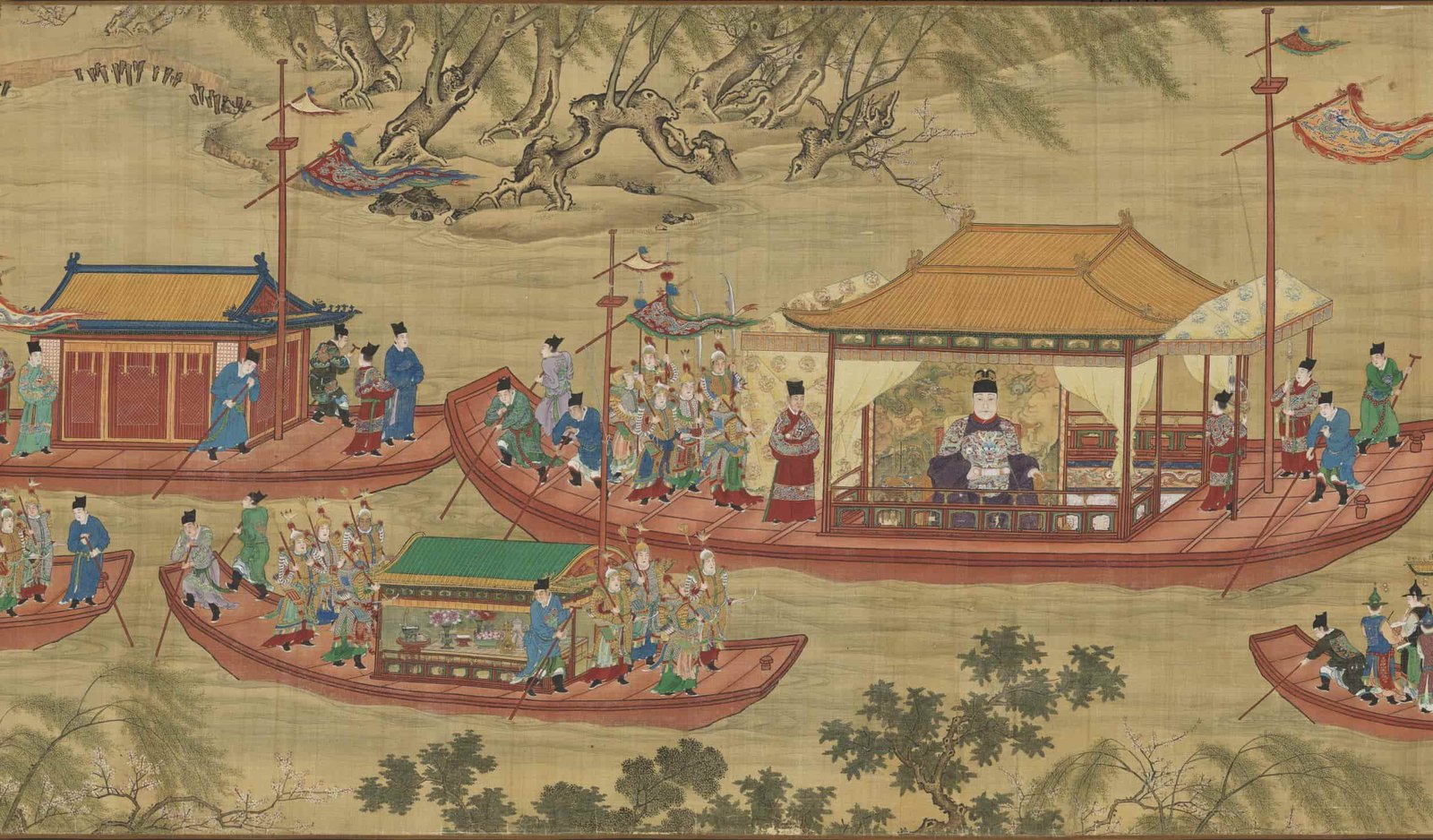
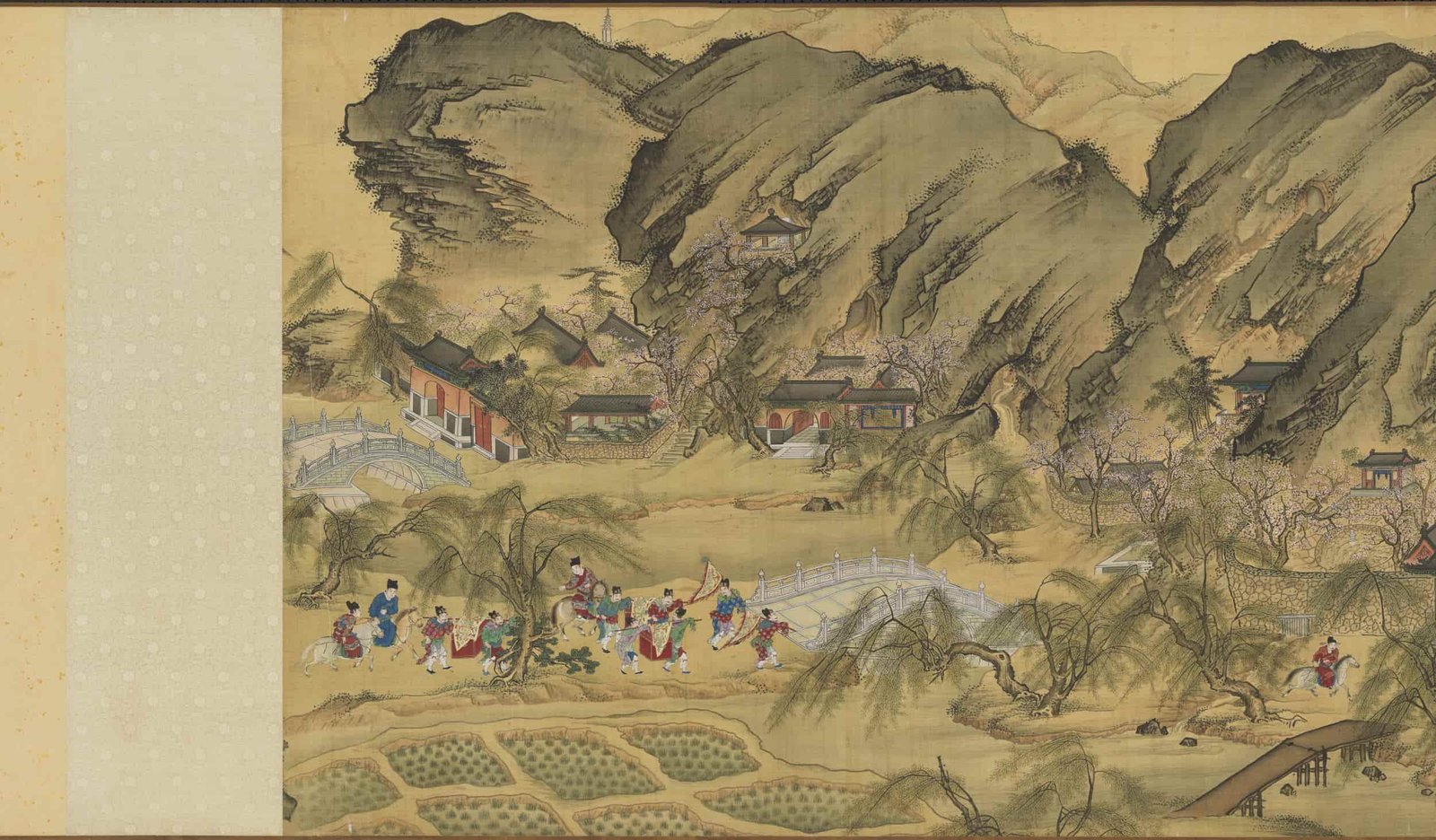
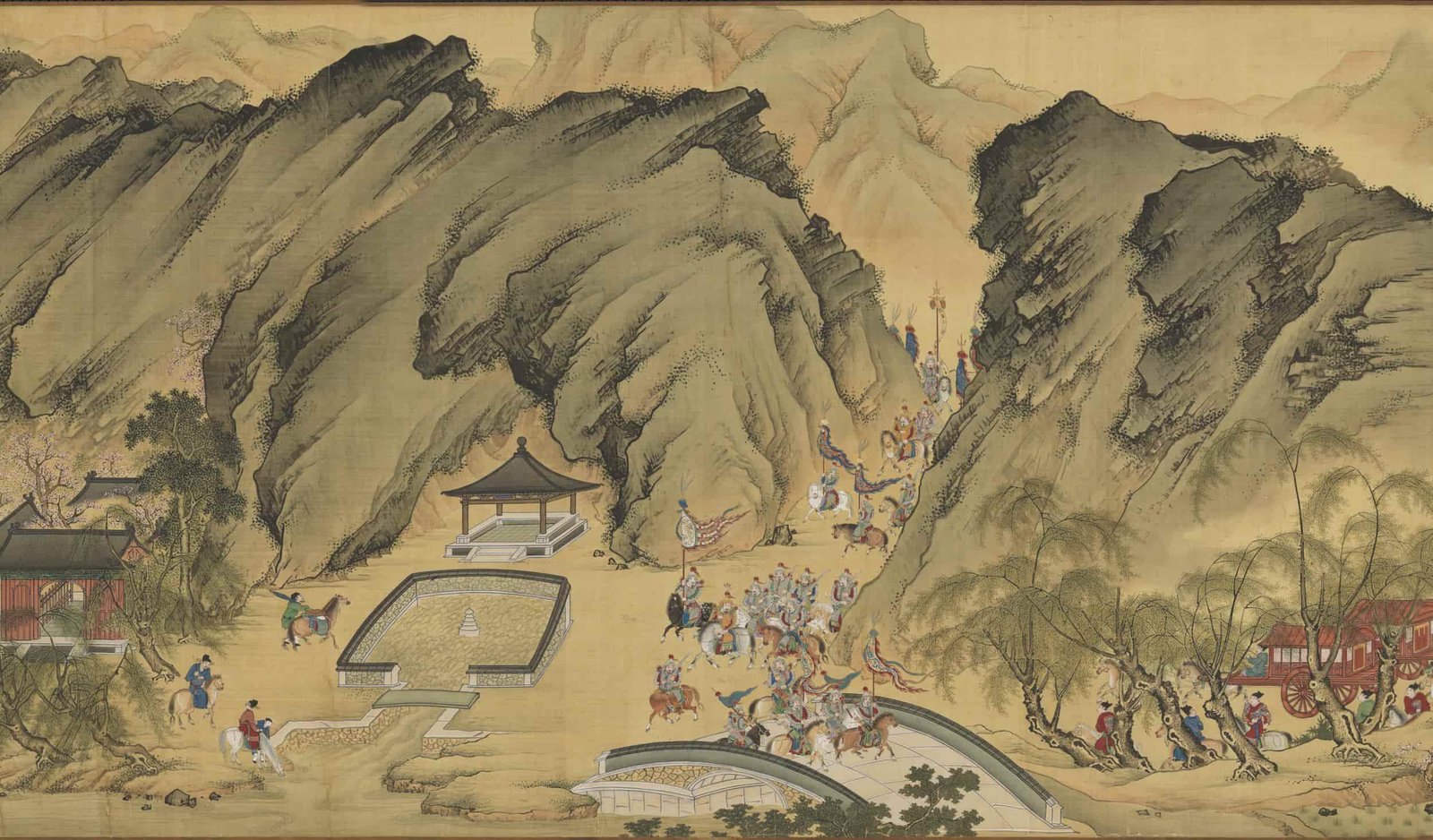
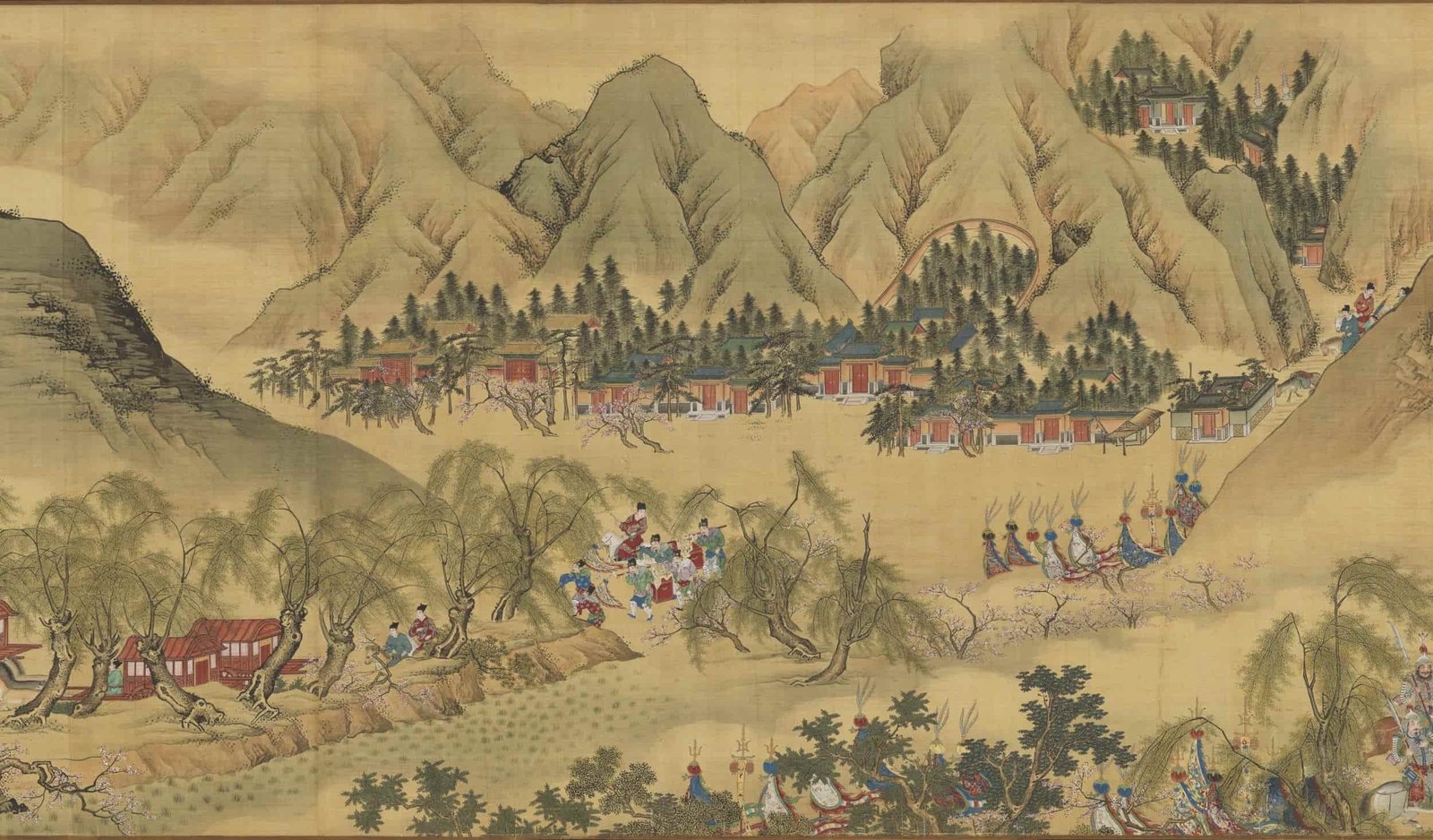
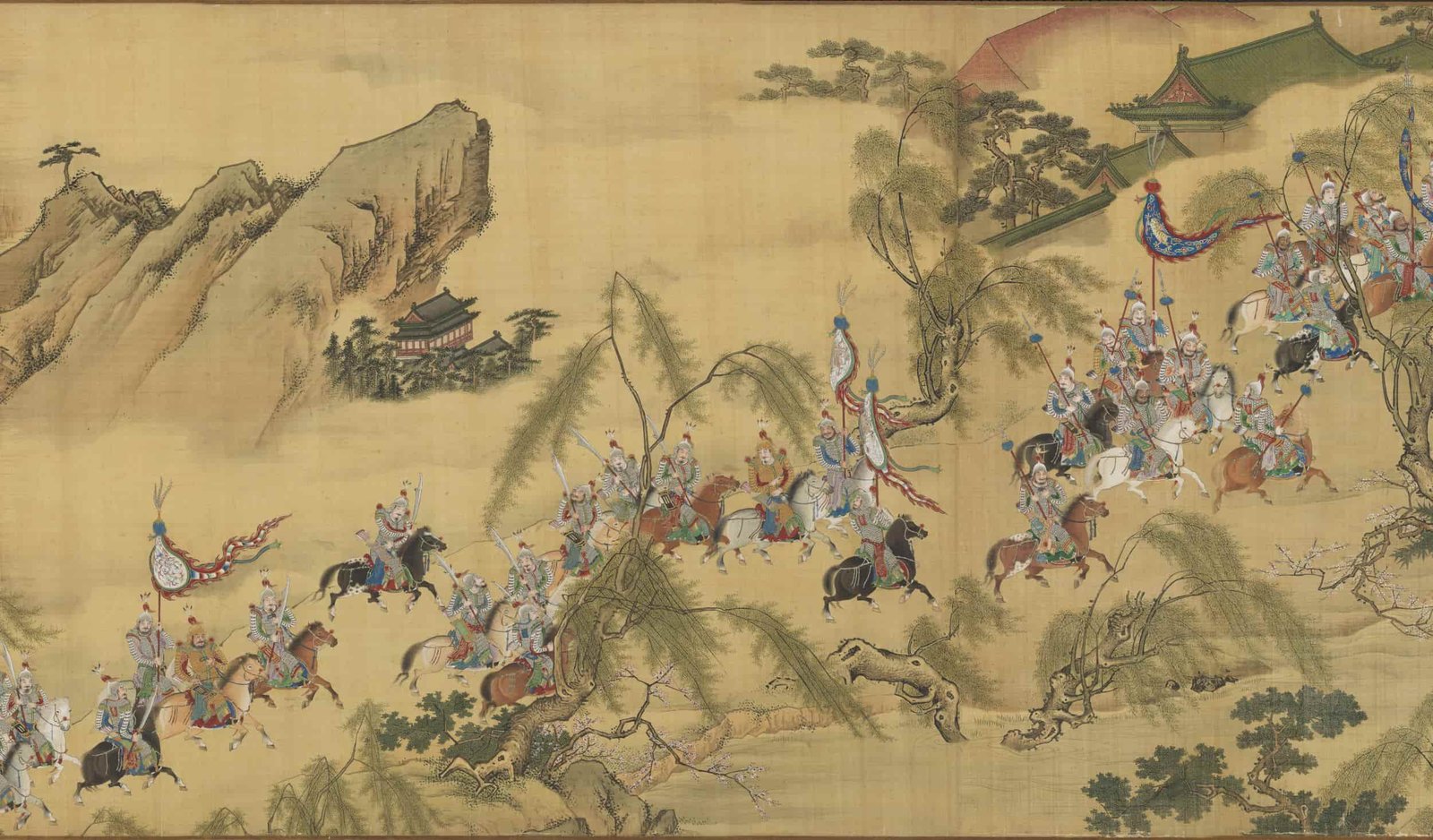
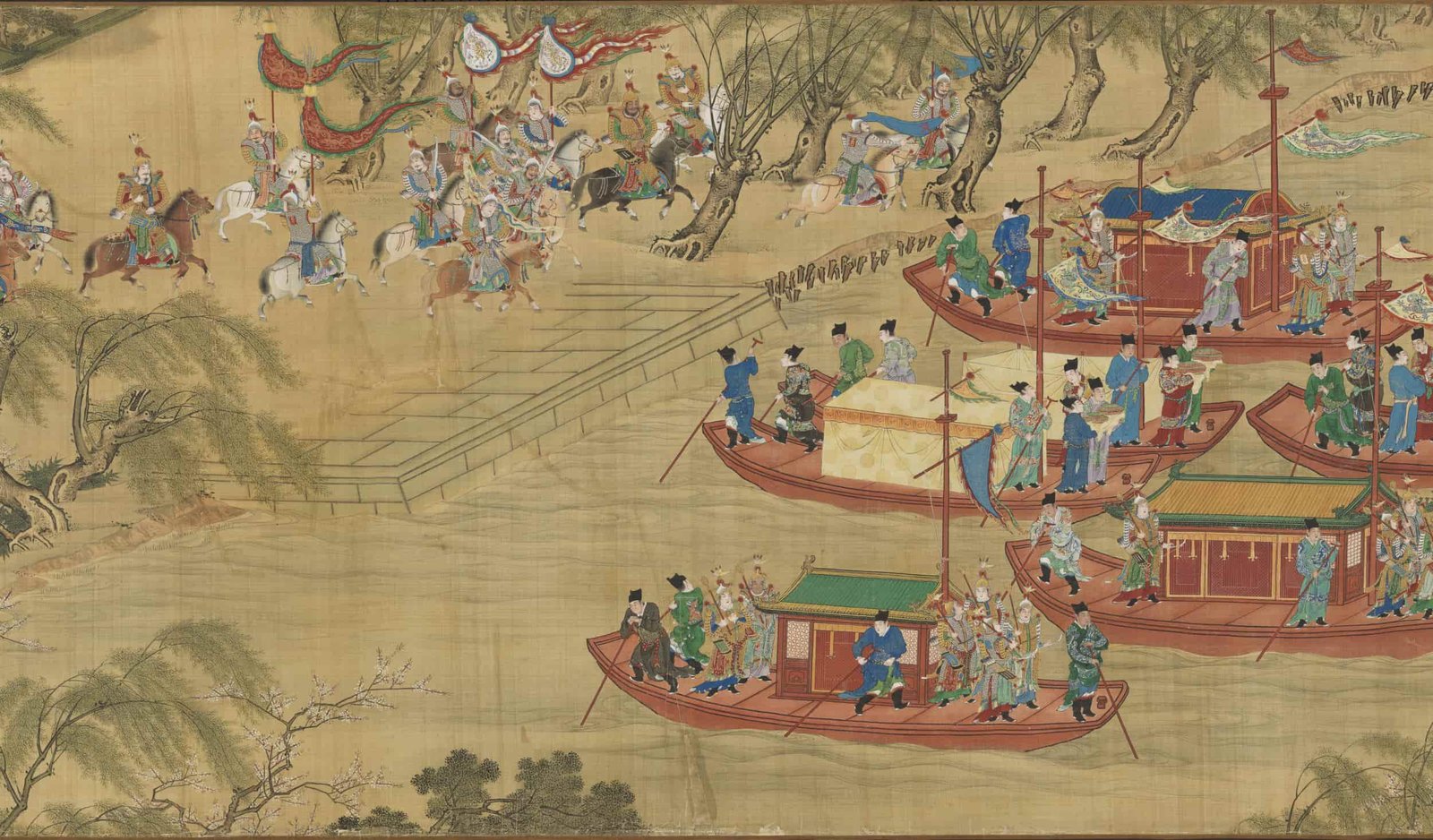
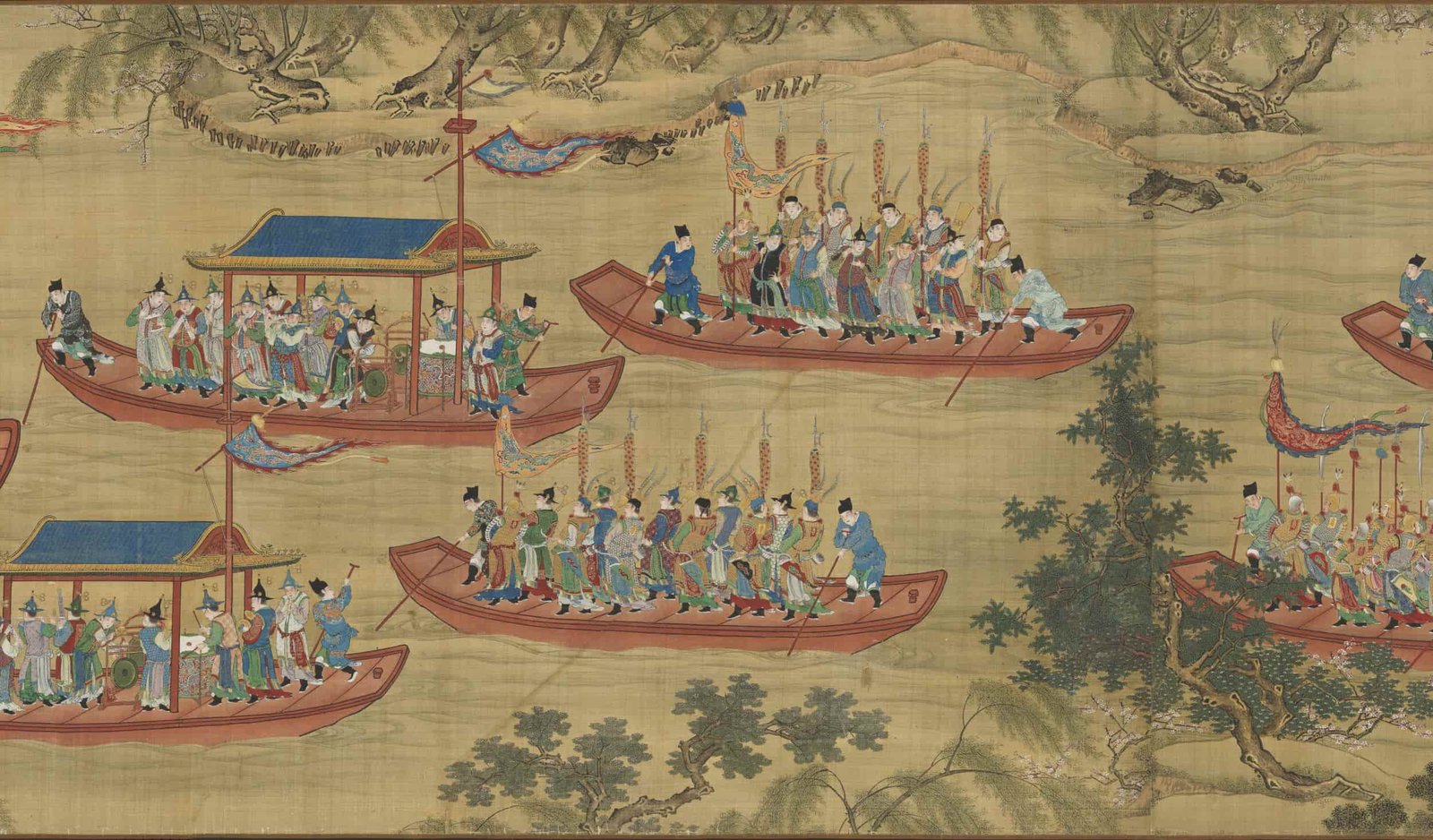
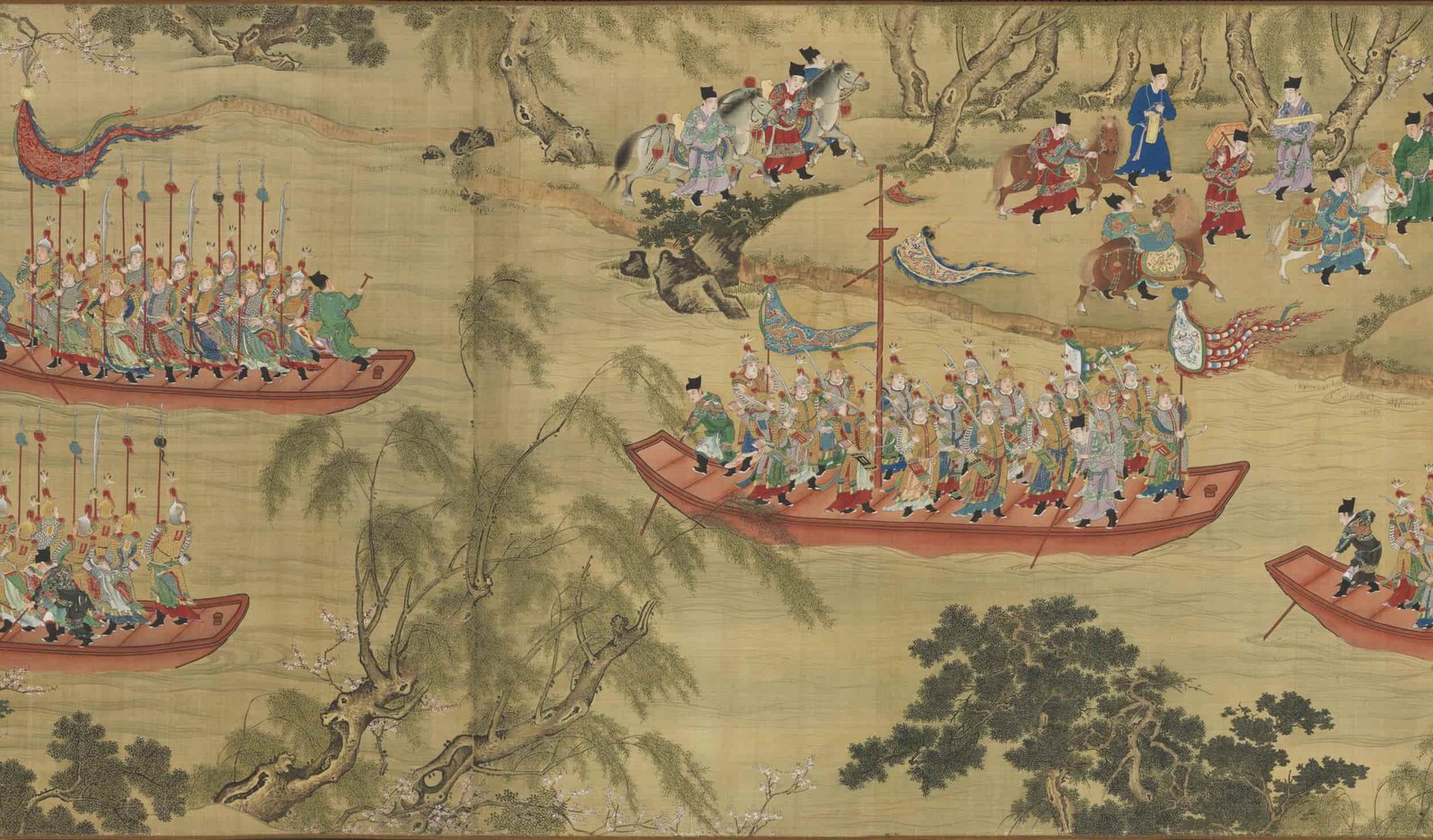
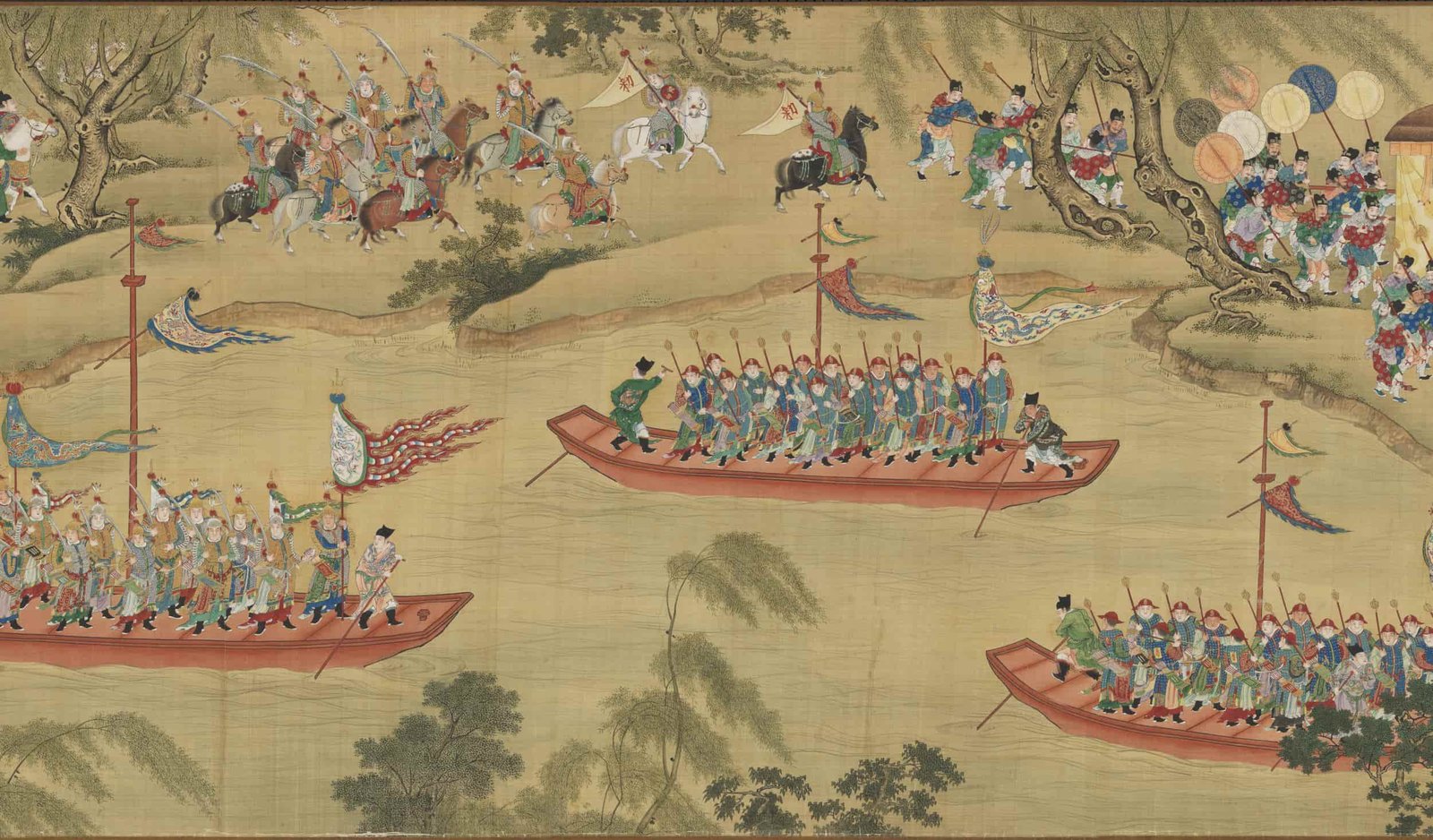
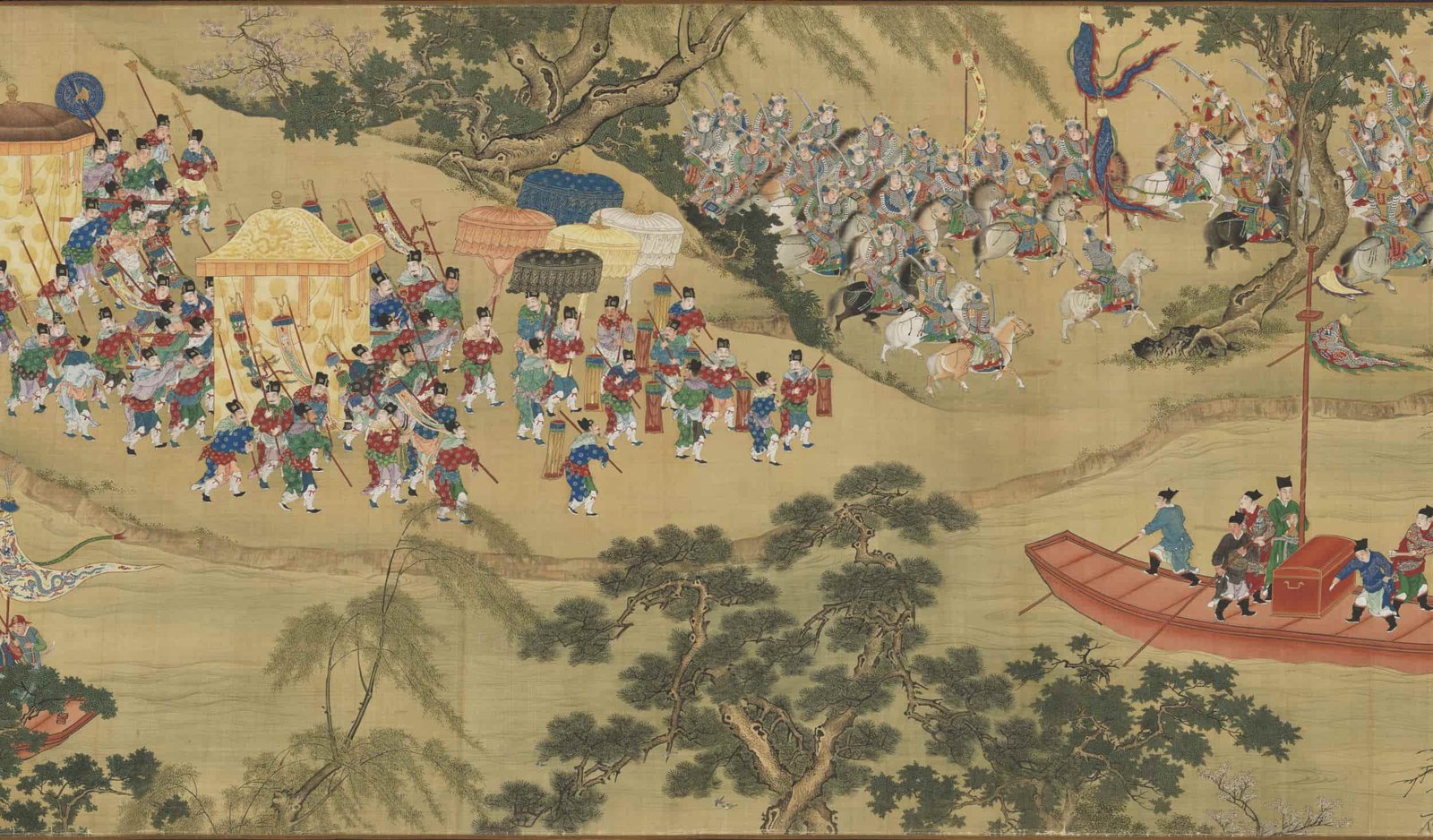
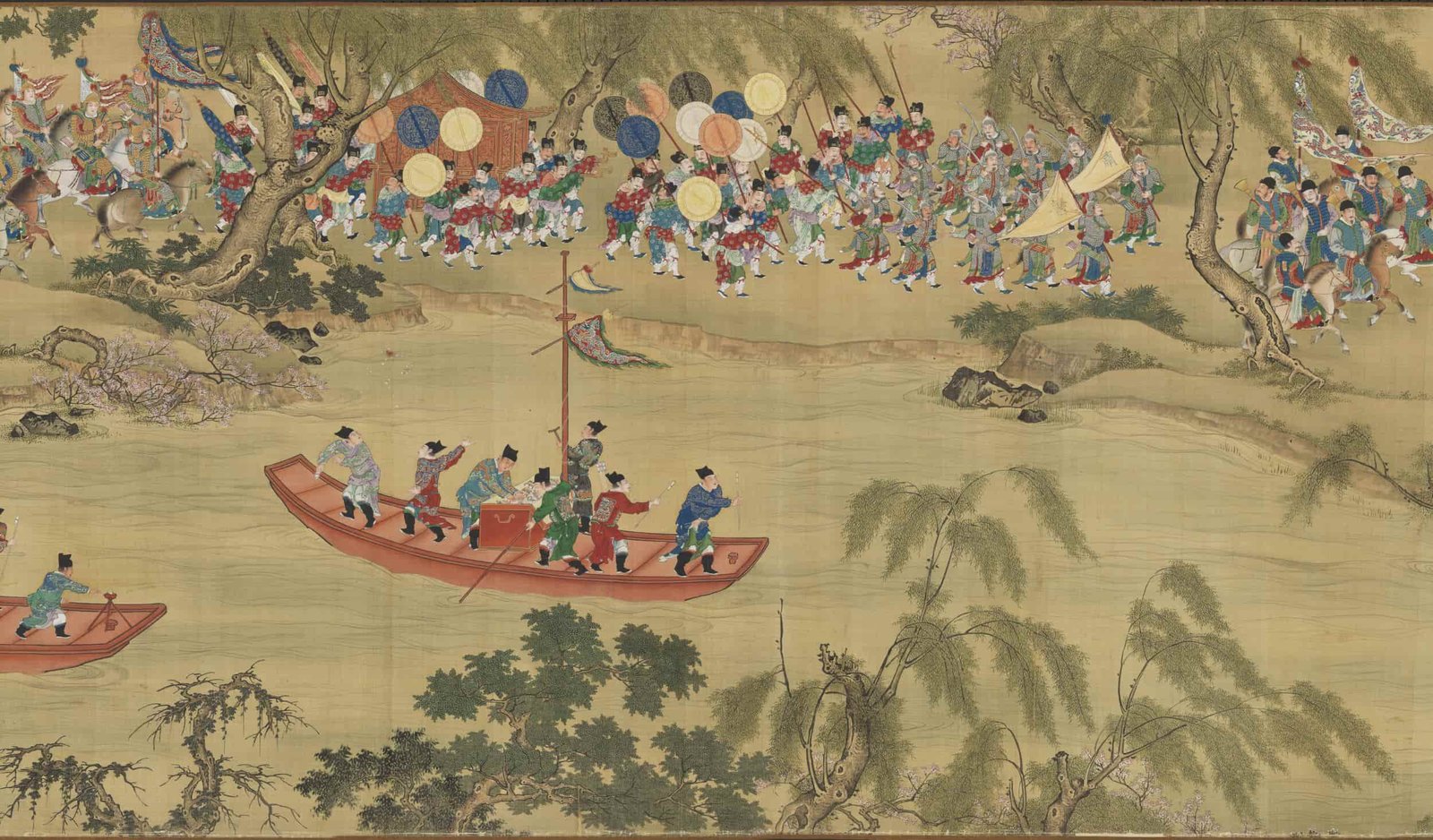
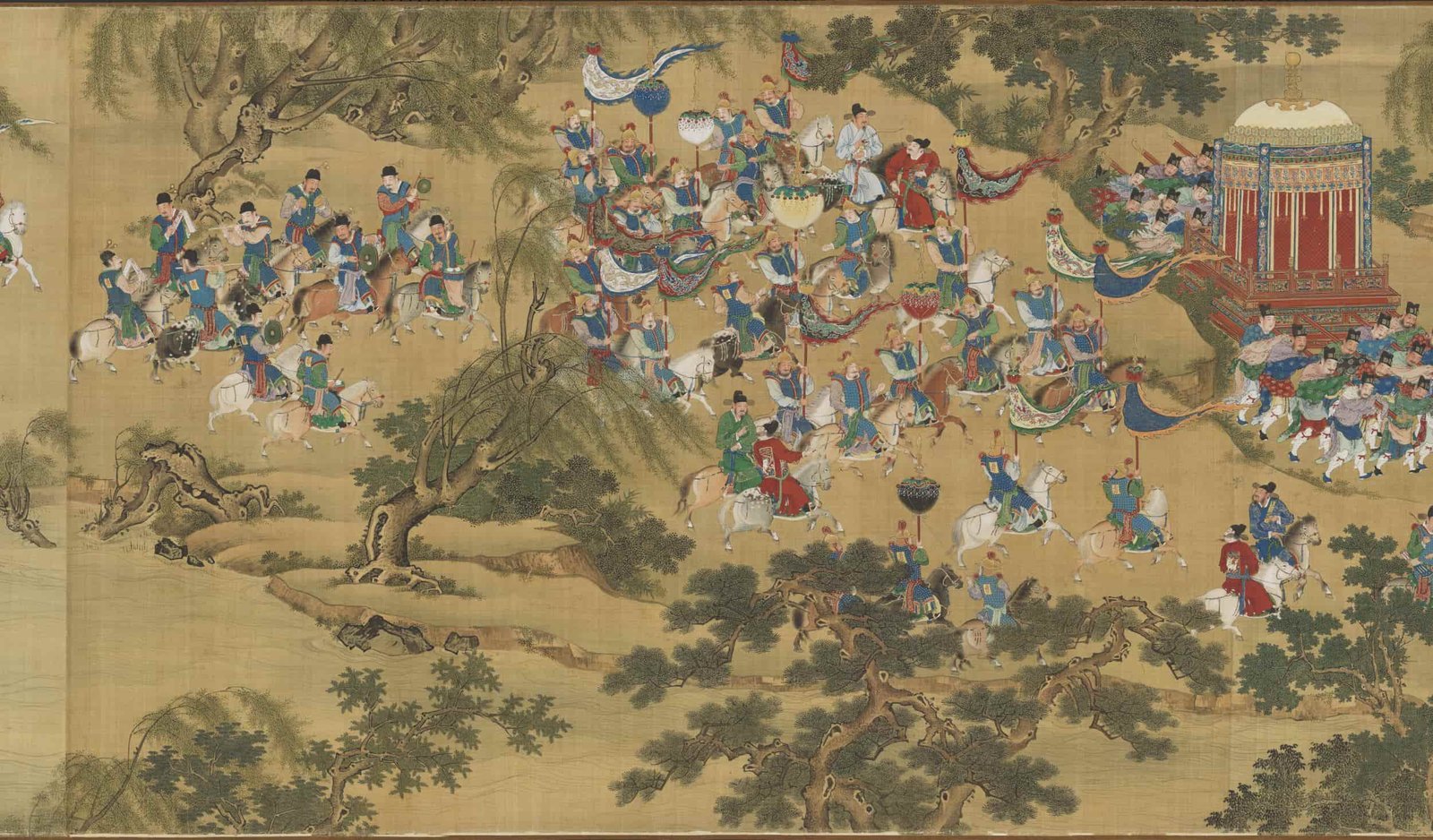
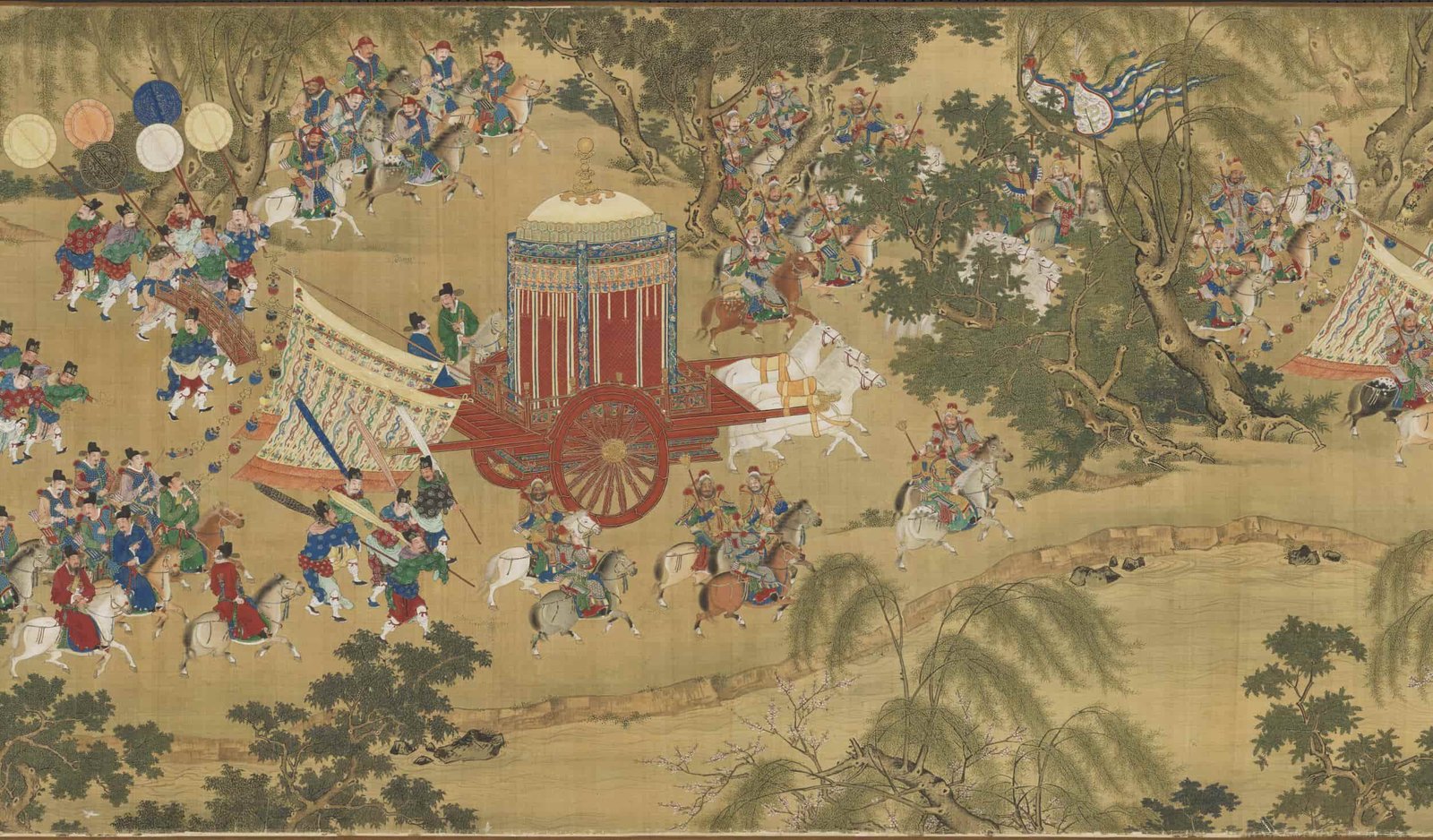
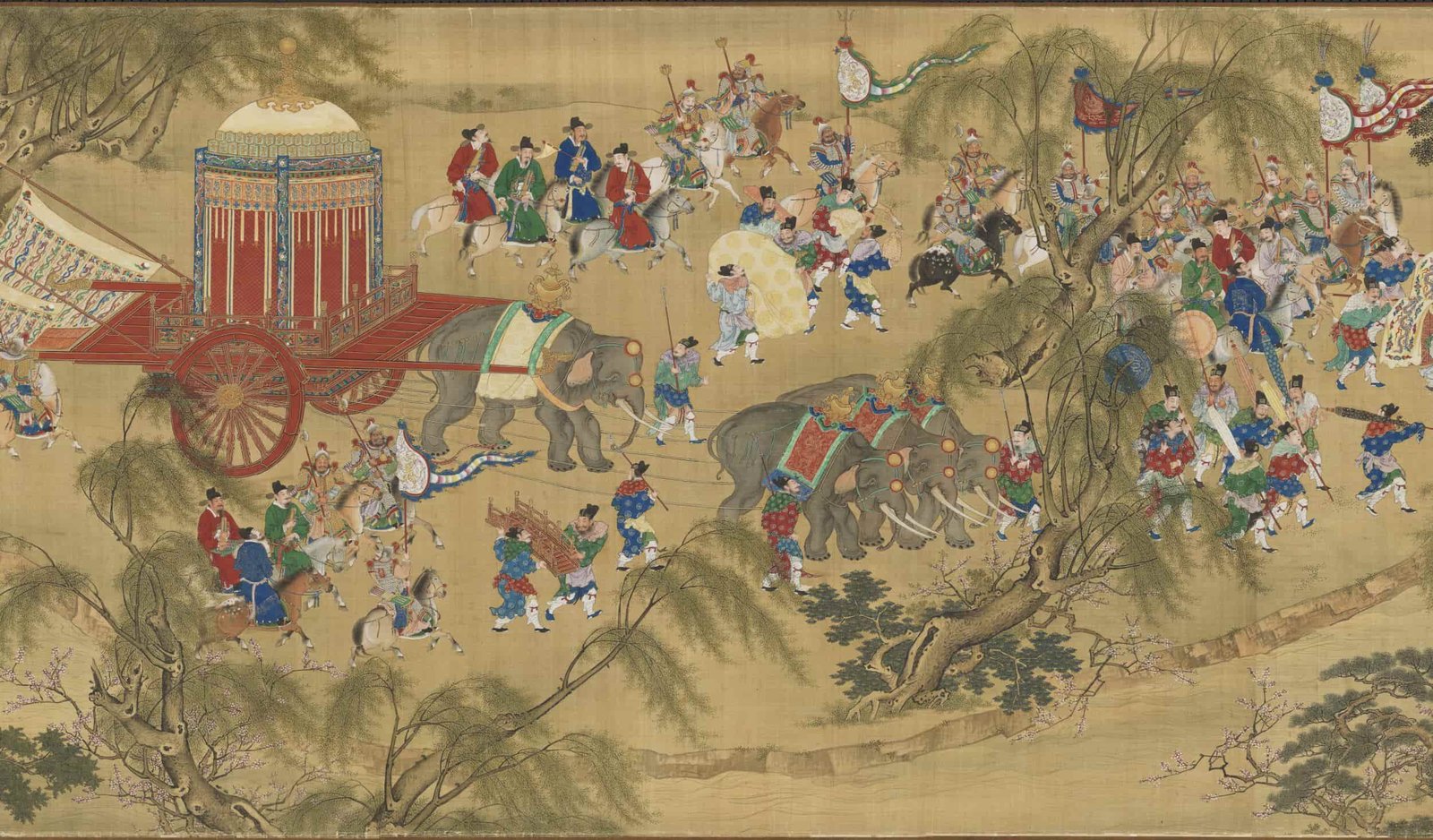
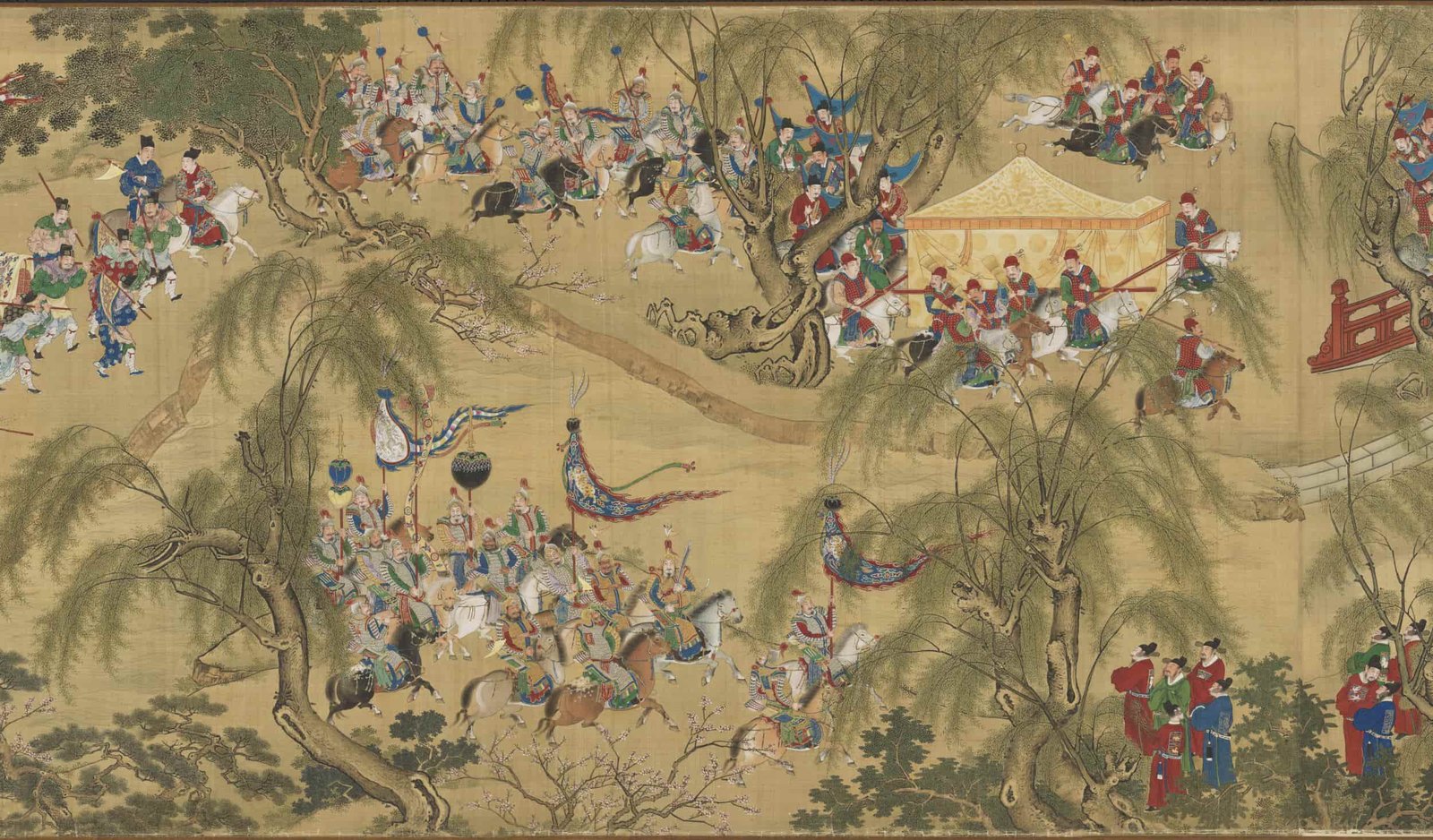
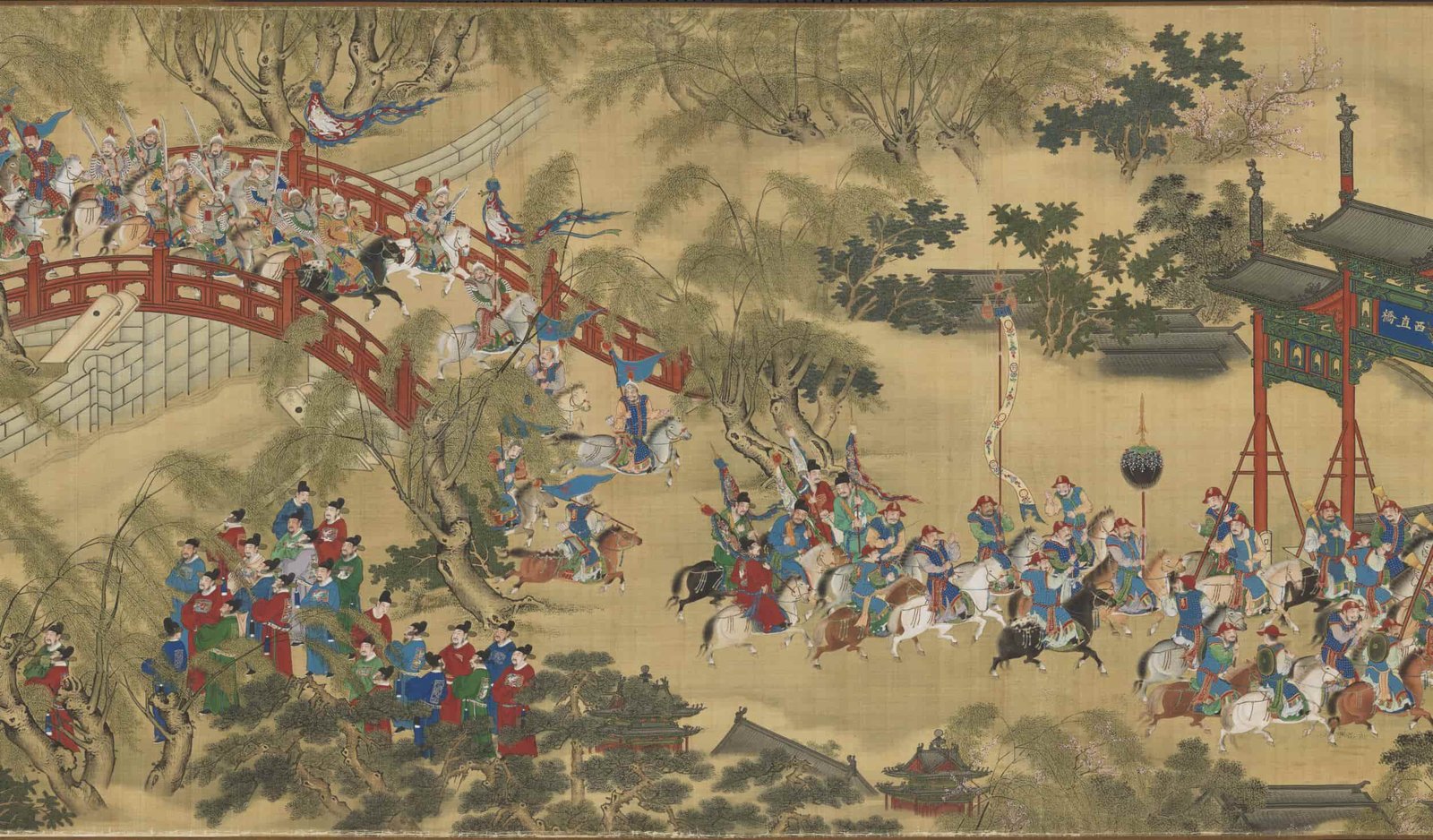
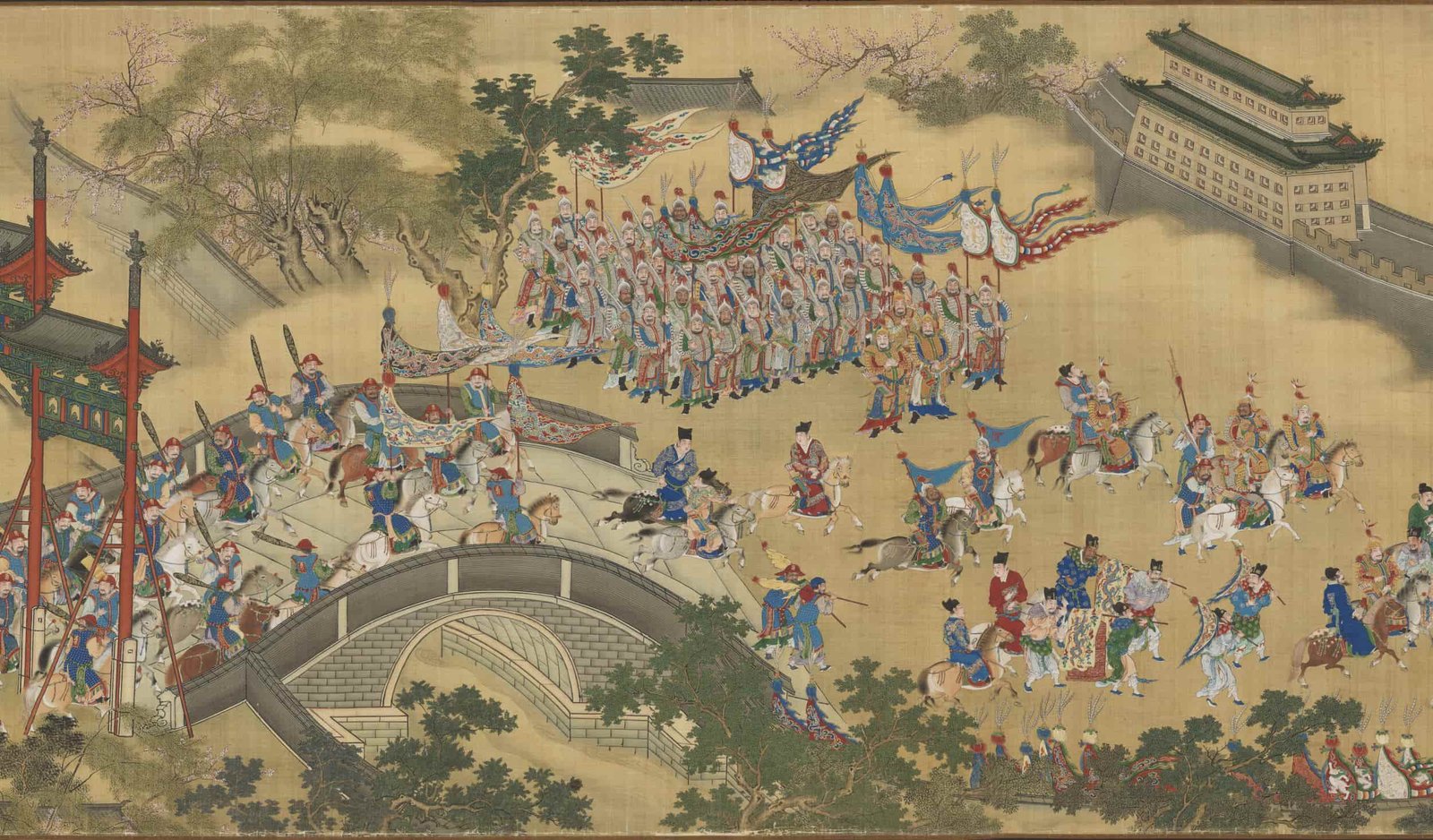
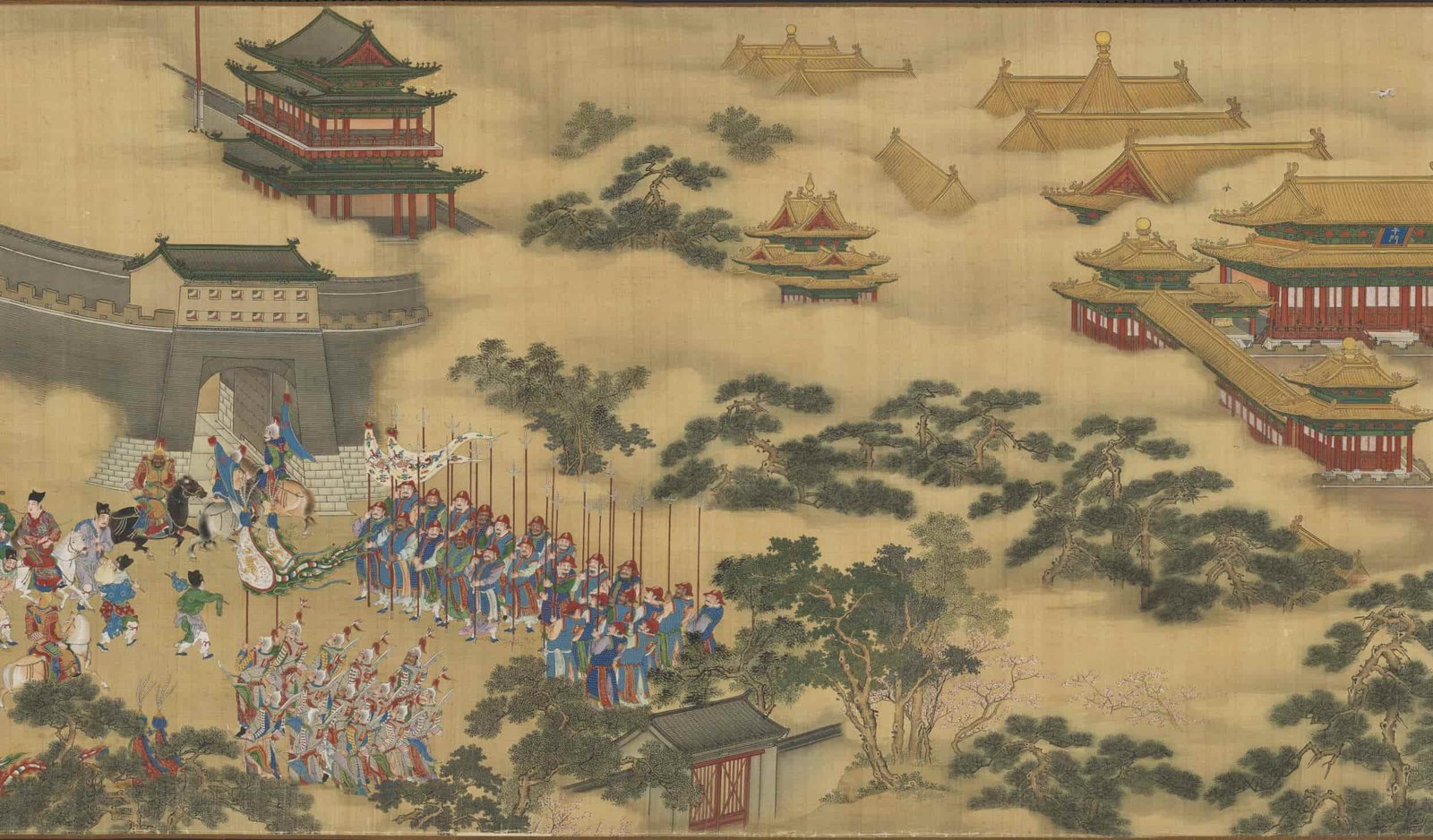
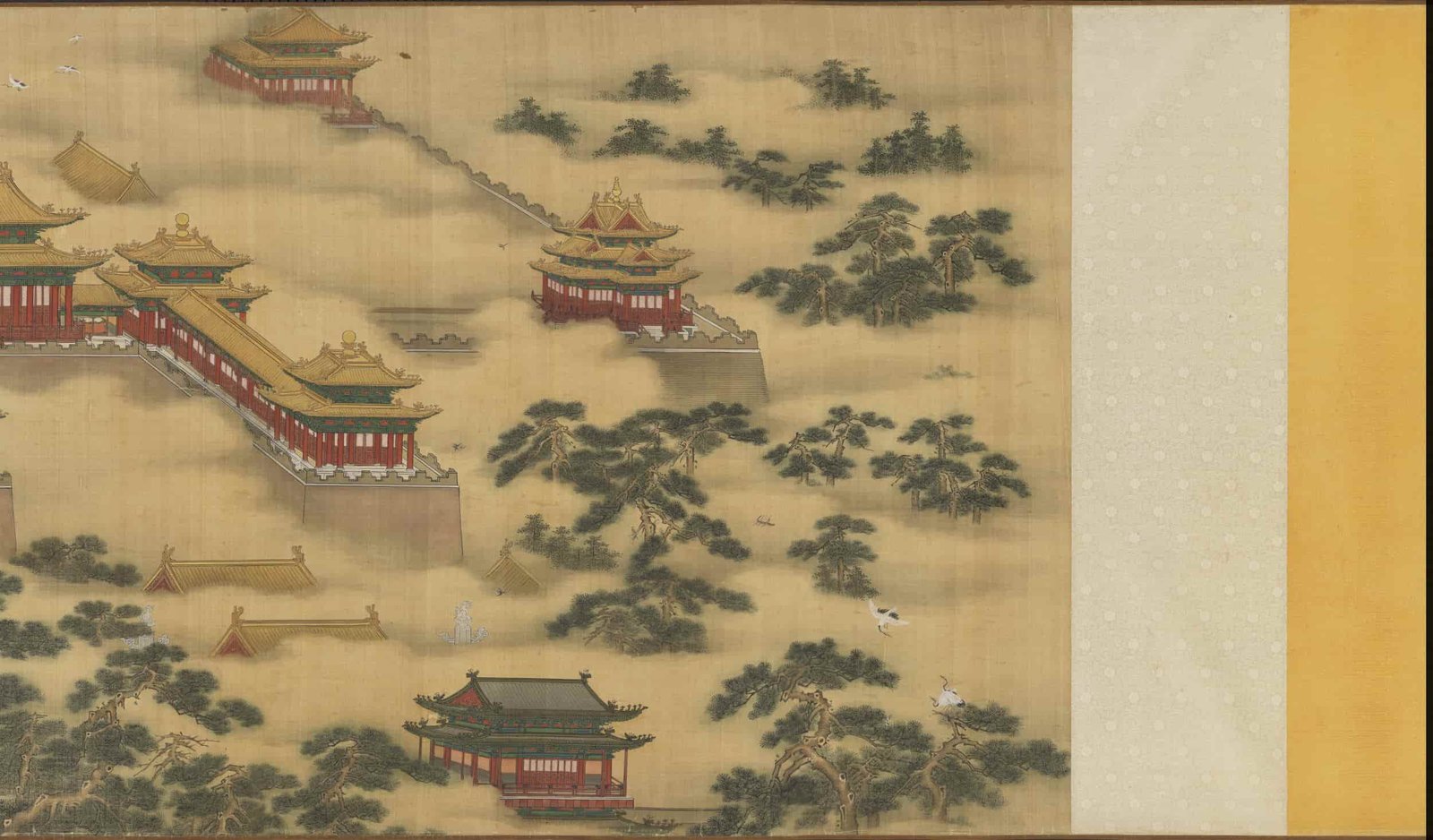
评价
目前还没有评价